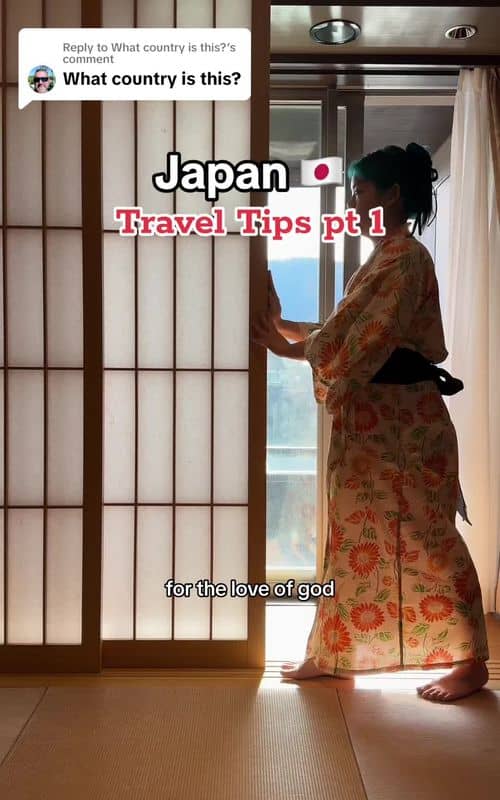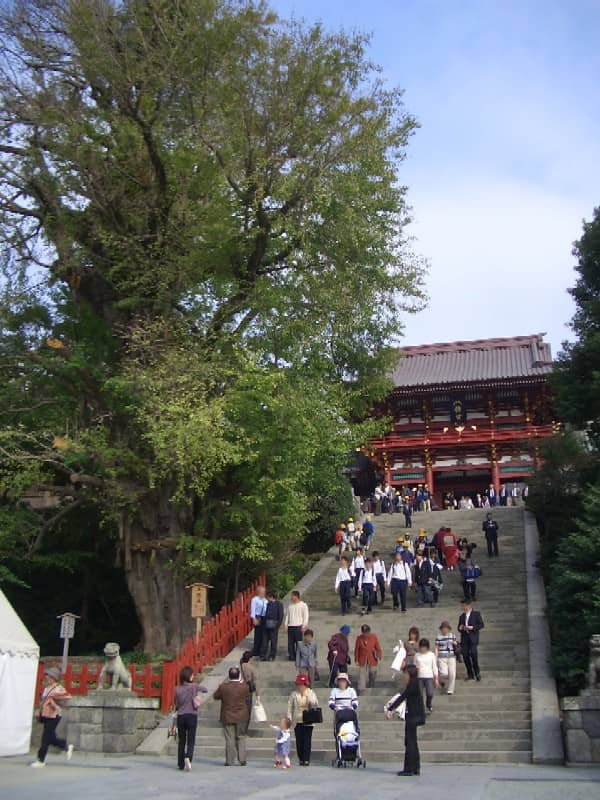
Tsurugaoka Hachimangu Tokyo
A historic 11th-century Shinto shrine in Kamakura, renowned for its Edo-style architecture and cultural significance.

Highlights
Must-see attractions

Social
From TikTok & Reddit
Best Time
Fewer crowds, peaceful atmosphere

Tsurugaoka Hachimangu Tokyo
Best Time
Fewer crowds, peaceful atmosphere

Highlights
Must-see attractions
A historic 11th-century Shinto shrine in Kamakura, renowned for its Edo-style architecture and cultural significance.
"A must-visit for its historical charm and unique tai-shaped fortunes!"

🎯 Respect Local Customs
Avoid public nose-blowing; sniffing is preferred. Always queue patiently.
🎣 Unique Omikuji
Don't miss the adorable tai (fish) shaped fortune slips! A fun souvenir.

Highlights
Discover the most iconic attractions and experiences

Main Shrine Hall
Central area
Admire the impressive Edo-style architecture of this historic 19th-century structure. A true testament to traditional Japanese craftsmanship.

Tai-shaped Omikuji
Near the shrine
Try your luck with a unique fish-shaped fortune slip! A fun and memorable souvenir from your visit.

Shrine Grounds and Gardens
Throughout the complex
Wander through the peaceful grounds, featuring beautiful gardens and smaller sub-shrines, offering a tranquil escape.
Plans like a pro.
Thinks like you
Planning Your Visit
Respectful Tourist Etiquette
Best Time to Visit
Best Times
Insider Tips
from TikTok, Instagram & Reddit
🎯 Respect Local Customs
Avoid public nose-blowing; sniffing is preferred. Always queue patiently.
🎣 Unique Omikuji
Don't miss the adorable tai (fish) shaped fortune slips! A fun souvenir.
🚶♀️ Explore the Grounds
Take time to wander beyond the main hall; the gardens and smaller shrines are beautiful.
🚆 Easy Day Trip
Consider combining with a visit to Kamakura for a full day of temples and coastal views.
Tips
from all over the internet
🎯 Respect Local Customs
Avoid public nose-blowing; sniffing is preferred. Always queue patiently.
🎣 Unique Omikuji
Don't miss the adorable tai (fish) shaped fortune slips! A fun souvenir.
🚶♀️ Explore the Grounds
Take time to wander beyond the main hall; the gardens and smaller shrines are beautiful.
🚆 Easy Day Trip
Consider combining with a visit to Kamakura for a full day of temples and coastal views.
What Travellers Say
Reviews Summary
Visitors praise Tsurugaoka Hachimangu for its historical significance, beautiful Edo-style architecture, and serene atmosphere. Many enjoy the unique tai-shaped omikuji and the pleasant walk to the shrine. Some note that it can get crowded, especially on weekends, and suggest visiting early or late to avoid the peak rush.
"I highly recommend visiting this shrine, especially during the early morning hours. I arrived around 8 AM and it was nearly empty, making the entire experience incredibly peaceful and calming. The views around the shrine are fantastic absolutely gorgeous in every direction and the serenity adds to the overall impact.
From this location, it’s also very easy to visit another nearby shrine, so you can enjoy both in one outing. Entry is completely free; you do not need a ticket to access the grounds. However, once you’re inside the main shrine, be mindful not to take any photos. There are signs clearly indicating this, and if you miss them, someone nearby will likely remind you.
The energy of this place felt very tranquil and grounding. I took my time strolling through the area, enjoying the stillness and beauty. The flowers surrounding the shrine were in full bloom and made everything even more stunning. This was a 10 out of 10 experience, and I absolutely recommend stopping here before moving on to the next shrine nearb"
Marissa G. W
"I recently visited this shrine, and while it was quite crowded—as expected—it still offered a peaceful and memorable experience. The shrine itself isn’t particularly large, so the high volume of visitors made the space feel a bit tight at times. However, the vibrant atmosphere created by locals and tourists alike gave the visit an energetic and authentic feel.
One of the highlights for me was the pond located on the grounds. It’s filled with lively fish and surrounded by greenery, offering a moment of calm away from the bustle. I found myself lingering there longer than expected, just enjoying the gentle ripples and natural beauty.
There are also a few small shops lining the path that sell traditional snacks, charms, and souvenirs. These added a nice touch of local culture and gave me the chance to pick up some omamori (protective charms) and try a sweet treat.
Overall, although the crowds can be overwhelming, especially during peak hours, the shrine is still worth a visit for its charm, serenity, and cultural touches. If you’re planning a trip, I’d recommend going early in the morning or later in the day for a slightly quieter experience, and to avoid the summer heat."
Eric
"One of the highlights of my Kamakura shrine was this place. The shrine area is really big as there are many smaller shrines inside the campus. There is beautiful pond inside the area surrounded by lush greenery. The main temple is very beautiful so make sure to spend a good couple of hours over here."
Ashutosh Dash
What People Like
What People Dislike
Frequently Asked Questions
🚇 🗺️ Getting There
Tsurugaoka Hachimangu is located in Kamakura, which is easily accessible from Tokyo. Take the JR Yokosuka Line from Tokyo Station or Shinagawa Station to Kamakura Station (approx. 1 hour). From Kamakura Station, it's about a 10-15 minute walk to the shrine.
Absolutely! Kamakura, including Tsurugaoka Hachimangu, is a very popular and worthwhile day trip from Tokyo, offering a blend of history, culture, and coastal beauty.
Walking is a great way to explore the main areas of Kamakura, including the route to Tsurugaoka Hachimangu from the station. Local buses and trains are also available for longer distances.
The JR Yokosuka Line is the most direct route from Tokyo. Once in Kamakura, the Enoden Line offers scenic coastal views if you plan to explore other parts of the city.
Yes, Tsurugaoka Hachimangu is a central attraction in Kamakura and is often included in guided tours or self-guided itineraries covering the city's temples and historical sites.
🎫 🎫 Tickets & Entry
The grounds of Tsurugaoka Hachimangu are generally free to enter. Some specific treasure halls or museums within the complex may have separate admission fees.
The shrine grounds are typically open from early morning until late afternoon or early evening. Specific hours can vary, so it's advisable to check the official website or local listings before your visit.
No advance booking is usually required for general entry to the shrine grounds. However, if you plan to visit any special exhibitions or events, checking for advance tickets is recommended.
Tsurugaoka Hachimangu hosts various festivals and events throughout the year. It's worth checking their schedule for seasonal celebrations, which can add a unique dimension to your visit.
Yes, Tsurugaoka Hachimangu is a popular venue for traditional Japanese weddings. You might witness a ceremony if you visit on a suitable day.
🎫 🧭 Onsite Experience
Don't miss the main shrine hall, the beautiful gardens, and the unique tai-shaped omikuji (fortune slips). The approach to the shrine, lined with shops and restaurants, is also part of the experience.
Yes, the shrine offers many picturesque spots for photography, from its traditional architecture to the serene gardens. The approach lined with cherry trees is particularly stunning in spring.
You can find traditional Japanese souvenirs, amulets (omamori), and the unique tai-shaped omikuji. The shops along the approach also offer local crafts and snacks.
Restroom facilities are available within the shrine complex. It's always a good idea to carry a portable water bottle, though some vending machines might be present.
It is the most important shrine in Kamakura, dedicated to Hachiman, the Shinto god of archery and war. It was founded in the 11th century and is a significant historical and cultural landmark.
🍽️ 🍽️ Food & Dining
Yes, the approach leading to the shrine is lined with numerous restaurants and cafes offering a variety of Japanese cuisine, from local specialties to more casual options.
Kamakura is known for its fresh seafood, especially shirasu (whitebait), often served over rice. You can also find delicious mochi and other traditional Japanese sweets.
While some restaurants can be upscale, you can find more affordable options like ramen shops, udon noodle houses, and street food stalls along the main approach.
Finding strictly vegetarian or vegan options might require some searching, but many restaurants can accommodate requests. Look for dishes like vegetable tempura or simple rice bowls.
Tipping is not customary in Japan and can sometimes be considered rude. Service charges are usually included in the bill.
📸 📸 Photography
The grand staircase leading up to the main shrine, the vermillion gates, the serene gardens, and the iconic tai-shaped omikuji are all excellent photo opportunities.
Photography is generally permitted on the shrine grounds, but it's always wise to check for any specific signage indicating restrictions inside the main buildings or sacred areas.
Early morning offers soft light and fewer people, ideal for capturing the tranquility. Late afternoon provides a warm, golden hour glow.
Drone usage is typically restricted at religious sites and in populated areas in Japan. It's best to assume drones are not permitted to avoid any issues.
While you can photograph the shrine, it's respectful to avoid taking intrusive photos of wedding ceremonies or individuals without their explicit consent.
For Different Travelers
Tailored advice for your travel style
👨👩👧 Families with Kids
Consider visiting during less crowded times, like weekday mornings, to ensure a more relaxed experience. While the historical aspects might be less engaging for very young children, the visual appeal of the shrine and the chance to try a unique souvenir can make it a memorable stop on your family's Japan adventure.
🚶 Budget Travelers
To save money, pack snacks and water, or opt for more affordable dining options like ramen shops or convenience store meals available in Kamakura. Exploring the shrine grounds and enjoying the atmosphere is a rich experience that doesn't require significant spending.
Deep Dives
In-depth insights and expert knowledge
A Glimpse into History and Significance
Its dedication to Hachiman, the Shinto god of archery and war, reflects the samurai spirit that once dominated this region. Visiting Tsurugaoka Hachimangu offers a tangible connection to Japan's feudal past and the cultural importance of Shintoism. The shrine's strategic location and historical role make it a vital landmark for understanding Japanese heritage.
Beyond its historical weight, the shrine is a vibrant center for local community life and religious practices. It hosts numerous festivals and ceremonies throughout the year, providing visitors with an opportunity to witness traditional Japanese rituals firsthand. The blend of historical significance and ongoing cultural relevance makes Tsurugaoka Hachimangu a truly captivating destination.
Navigating Kamakura: Beyond the Shrine
Popular additions to a Kamakura itinerary include the iconic Great Buddha of Kamakura (Kotoku-in), the serene bamboo groves of Hokoku-ji Temple, and the picturesque coastal train line. For those interested in vintage finds, areas like Shimo Kitazawa (though not in Kamakura, it's a popular Tokyo vintage spot mentioned in relation to Kamakura trips) offer unique shopping experiences.
Getting around Kamakura is relatively easy. The main shrine is a pleasant walk from Kamakura Station. For exploring further afield, the Enoden Line provides scenic routes along the coast, and local buses connect various temples and attractions. Planning your transport in advance can help maximize your time exploring this historic seaside city.






Social
from TikTok, Instagram & Reddit